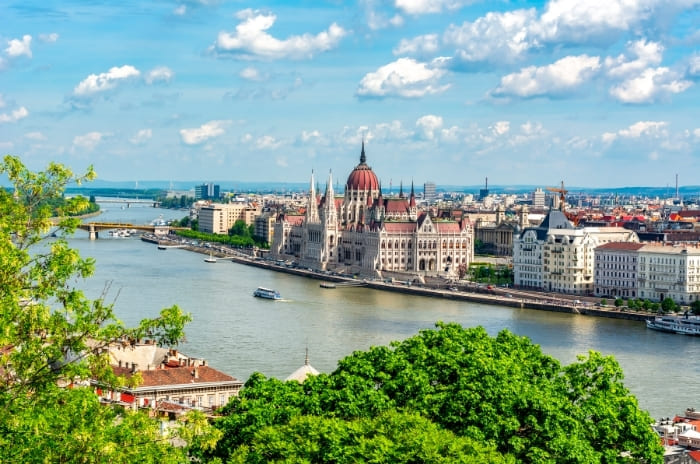Climate Strategy Outline of Budapest Municipality, Hungary

Introduction
The Metropolitan Local Government in Budapest develops an independent municipal environmental protection program related to the urban environment, its protection and factors endangering the environment in order to protect human health and preserve and sustainably use natural resources and values.
One of the main tasks of the Metropolitan Local Government (furthermore local government) defined by law is to regularly assess the environmental condition of Budapest, and then to inform the population about it annually.
In addition to the professionally controlled information of the population, the change directions and tendencies serve as a basis for Budapest’s environmental program for the next period.
Overview
The global climate change is clearly reflected in the development of Budapest’s climatic conditions. An increase of about 1.45 ° C between 1901 and 2019 can be detected in the development of the average annual temperature of Budapest. In parallel the annual amount of sunlight duration has been increasing since the early 1970s.
According to the National Meteorological Service for Climate database since the beginning of the last century, resulting in heat waves denser is also reflected in its occurrence; their frequency has increased significantly over the last 25 years. Among the climatic phenomena, the large urban heat island effect should be highlighted. In 2019, the annual average surface temperature-based heat island intensity value, which is the difference between the average temperature in urban and peri-urban areas, 1.12 ° C in the morning and 1.91 ° C in the evening. The average surface temperature-based heat island intensity value in June is outstanding: was 3.22 ° C in the morning. Also in the summer, the extent and intensity of the heat island significant: in the dominant part of the Pest side of the capital it is 3-7 ° C higher average temperature than in peri-urban areas.
Aims and activities
The aim of the climate strategy is to increase the knowledge of the capital’s decision-makers and the public about climate change, its mitigation and adaptation, to ensure the long-term coordination of activities related to this topic at the capital level, professional communication and knowledge sharing on climate change. The climate strategy was based on the methodological guide prepared by the Association of Climate-Friendly Municipalities. This methodological guide ensures the uniformity, coherence, high professional quality and effectiveness.
For the target year 2030 an extended version in which the Capital aims to reduce emissions by at least 40%.
Emission reduction
• Improving the energy efficiency of buildings, industrial production and service facilities,
• and increasing the share of renewable energy sources
• Improving the energy efficiency of transport infrastructures and environmentally friendly transport ways to support and develop
• Increase and improve the quality of green spaces to improve carbon sequestration
Climate model and related detailed vulnerability study
• Development of green-blue infrastructure
• Mitigation of heat island impact in the built environment
• Development of flood protection system
• Adaptive stormwater management
• Preparing for extreme weather events, the health effects of climate change
• Reducing the vulnerability of natural and landscape values
Attitude formation, climate awareness
- Climate-conscious urban management: cooperative, leading leadership in climate protection
- Climate-conscious urban dwellers: strengthening environmental culture and responsibility in the population, economic operators
More info here
